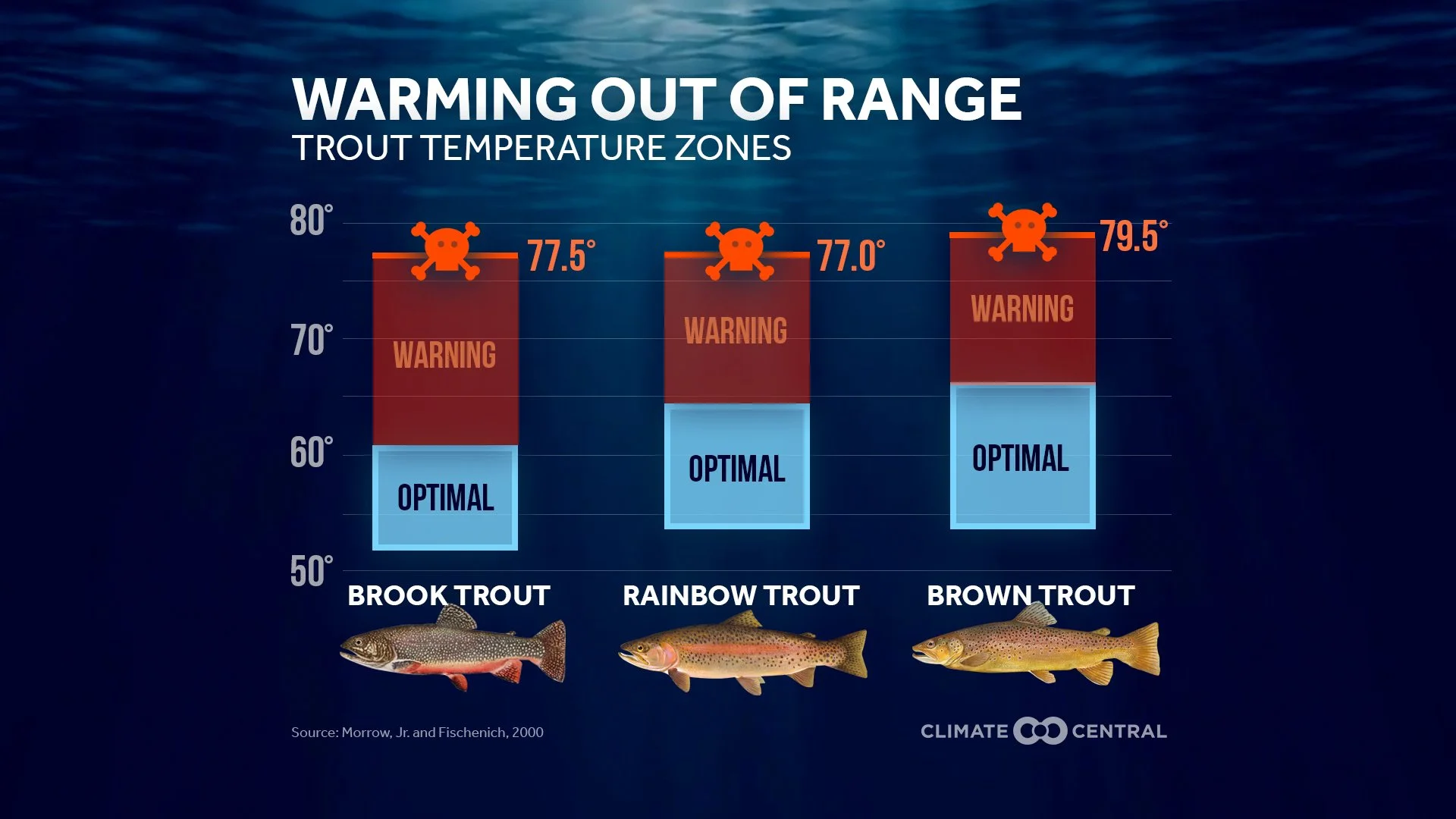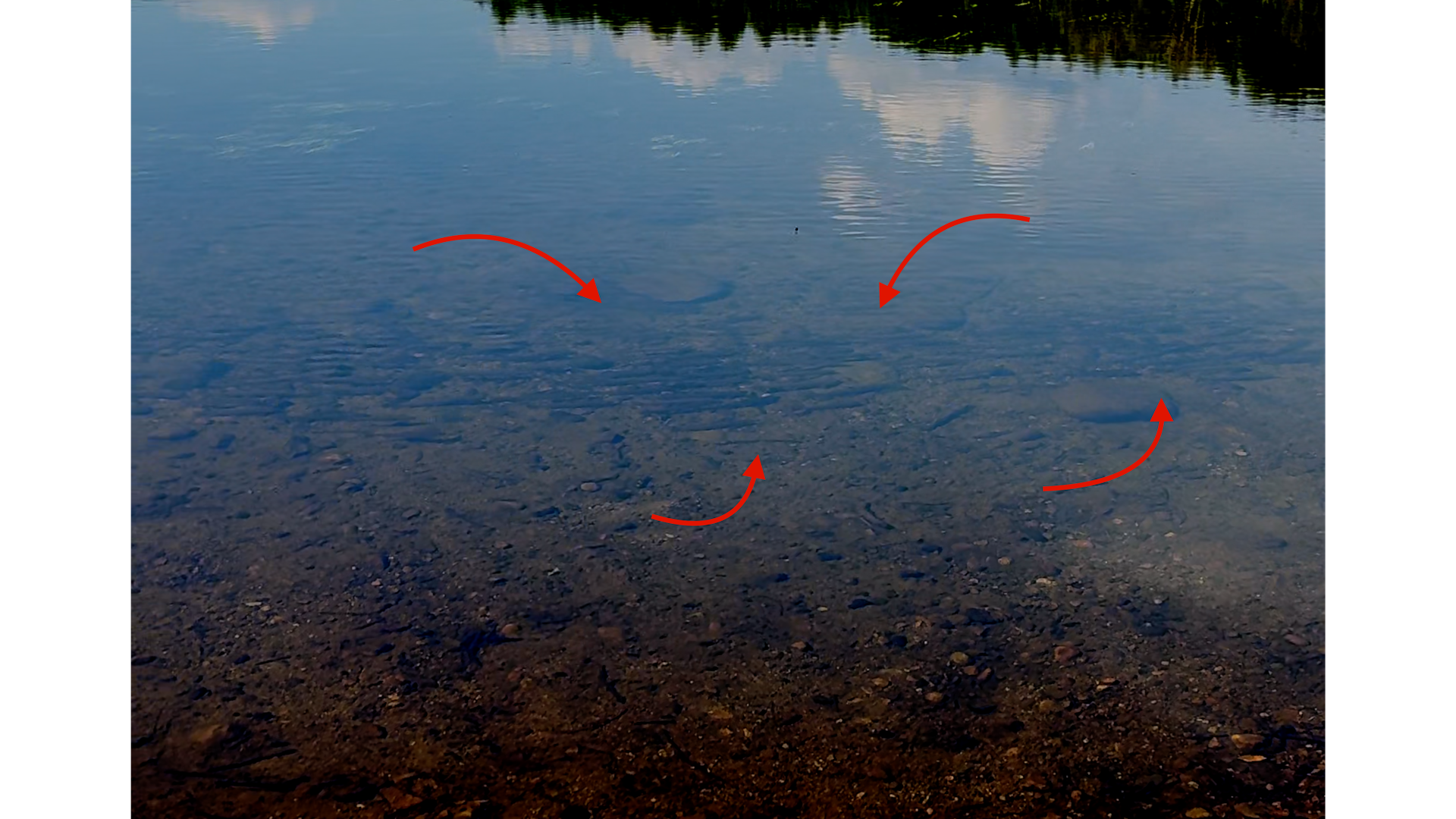Warm Water...Low Flows...What Does This Mean To Trout?
THE JOURNEY
Let me start with my personal journey regarding fishing for trout and my growing concern with water temps, flows, and my impact. Let’s start at the beginning. My journey began at the age of 5 fishing for small brook trout in the stream behind my house. It was an amazing era to be a child and great place to grow up. I was allowed to explore the stream alone as long as I didn’t stray too far. I can remember peaking through the ferns, over the bank, to trout in small plunge pools and hiding under overhanging banks. This is where my love of fishing began. My goal was always to catch the big one and in those days I ate any keepers I caught. I knew how to gut and cook a trout at a very early age and did so often. The value of fish = food and also fish = fun was in full swing.
Fast forward to today. I am a guide and avid fly fisherman and my abilities to catch trout/fish has advanced. The negative impact I am capable of has increased due to my ability to catch more fish, bigger fish, and do so consistently. My “value” of trout has shifted from my early days. Now it is fish = fun mostly. However, I have also reached a point where fish = giving back. What does that mean? I have loved my home waters in Maine for a very long time and now I care more about fisheries health, sustainability, habitat improvement, and management more than ever. This is were the topic on WARM WATER and trout come out to play
WHAT IS WARM WATER?
Warm water for trout is whenever the temp reaches a point that stress takes place. This temp is different for the varying species of trout, but for this write up, lets focus on brook trout, rainbow trout, and brown trout in RIVERS exclusively. I emphasize rivers exclusively because cold water is easier to find in lakes and ponds that stratify. In rivers that is harder and trout rely on cold water tributaries and springs. However, below you will find a chart that shows the different lethal limits for trout species and when stress takes place.
Brook trout require the coldest water, than rainbow trout, followed by brown trout. As we see warming trends throughout the country paired with drought, these ranges are very important to note. Here on my home waters of the Androscoggin River I do not guide or fish for trout when we hit the stress range for rainbow trout. Normally this happens in late June but does vary due to weather. Thermometers are your best friend! They give the real truth when it comes to ‘warm water”.
ETHICAL PRACTICES?
So lets say that the water is 72 degrees. This is well below the lethal limit for brown and rainbow trout. Does this mean you should fish for them? The answer is no. The energy and oxygen depletion is too high to recover from. That trout may be able to live for a period of time in that warm water if left alone. But the expenditure in warm water temps like that will be too much to recover from. Many trout caught and released in warm water die. I will note we are talking rivers and not lakes and ponds. Rivers do not stratify like a lake or pond. Meaning rivers stay warm through out the water column and rely on springs and tributaries to bring in cold water refuge areas. Where as a cold water lake will stratify and have abundant cold water 15-25ft down. This makes it easier for trout to survive warm spells in a lake than a river.
Below are some examples of what cold water refuge can look like. Carry a thermometer, check the surrounding temps. If they are within the trouts stress range move on. It is important to note that even though the water they are in may be cold enough for them to survive or even outside of their stress range, leave them alone. They are in this location for a reason. SURVIVAL. You can fish for them another day, when the temps are in optimal ranges.
When trout are stacked up like this in full sun and shallow water……….it is a good indication of cold water refuge. Move on leave them alone.
Another prime example of vulnerable river trout sitting in a cold water refuge seam.
Ok now lets take this a step further. Enter the Catch-n-Release guy. I am one of them. I believe that it is a great practice in the conservation of trout. Especially when practiced correctly. Let me elaborate. When I first started the practice it was early in my fly fishing career. I had no one mentoring me at the time. I did not know about trouts lethal limits in regard to warm water. I just wanted to catch trout and catch as many as possible. I thought that if a trout swam away it was “good”. I fished all summer in my usual spots. I also found other productive areas and fished them a ton, in the hot weather. I did not know at the time that trout were there for a reason. Turns out these were some of the cold water refuge spots I avoid today in hot times. I now check on these areas to see what the water temps are doing. I also try to take note of if these areas are being exploited. Which they definitely are. My point is………Catch-n-Release just isn’t enough. You need to recognize when and where it is ok to fish and when it isn’t. I see it a bunch in the fly fishing world where people have a certain river they enjoy fishing and they won’t fish another river. They also fish it every weekend, no matter the conditions. I was no different. Now I take the opportunity to learn new species, fisheries, tactics, presentations. Here in Maine we have, smallmouth, pike, carp, sunfish, stripers! Plus other species as well. If you look in your home state, you too can find new skills and species. Who knows you could innovate fishing for a new species in your area. My point is, mix it up. Become a better more well rounded fisherman. Don’t be the tight line nymph guy who can’t cast further than 20ft. Don’t be the dry fly guy who cast cast a sinking streamer line. Try new things when trout waters get hot and you may be surprised. Surprised at your new found skills and you may find another species you love to fish for!



